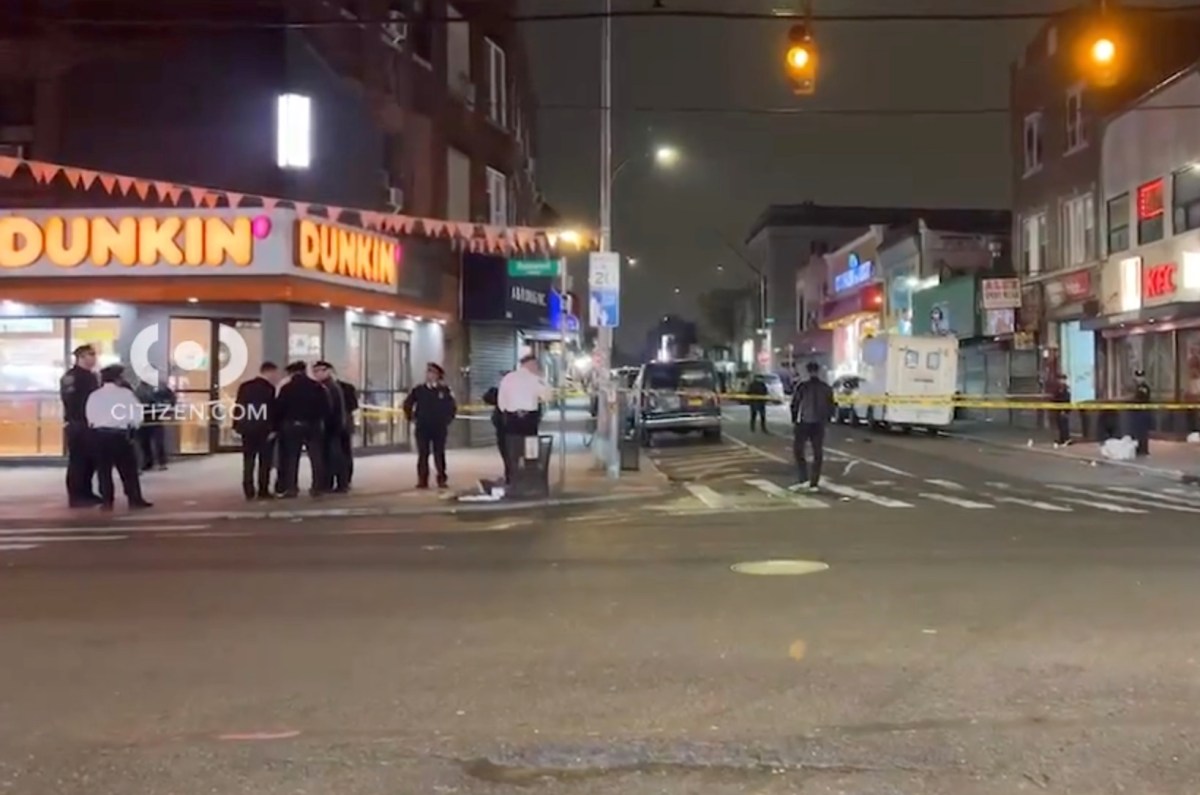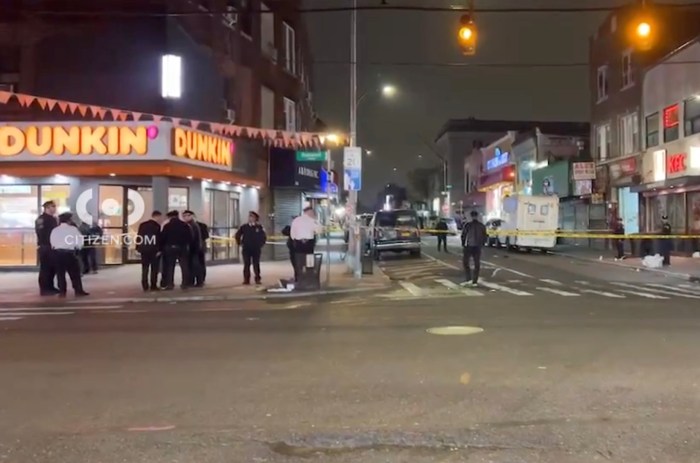By Kathianne Boniello
An archeologist hired by the city Parks Department said her study of historical documents indicated there may be as many as 1,000 bodies buried in Martin's Field under the concrete playground at 164th Street in Flushing.
The public was given a chance to see and comment on the results of the study on the city playground, which was once predominantly a cemetery for native Americans, blacks and the poor, at a lecture given Sunday at the Flushing library.
Manhattan-based archeologist Linda Stone and Bayside resident and activist Mandingo Tshaka gave the lecture, which featured the history of Martin's Field playground for the more than 60 people who attended.
Martin's Field, which is located between 164th Street, 165th Street and 46th Avenue in Flushing, has been at the center of a political battle for more than two years as activists have sought to memorialize the dead buried there and residents have fought to preserve it as a playground.
Stone was hired by the Parks Department last year to conduct a $13,000 on-site field study of the playground to continue the search for bodies buried there.
Before the field work Stone had reviewed thousands of burial records, city and Parks Department maps, and historical records in a documentary study of the playground she did in the spring of 1996.
Tshaka, who said he first discovered the original burial ground 10 years ago, said “the very idea of a cemetery in a playground was incomprehensible to me. It is a site of pain.”
After the lecture, residents called for a memorial at the half-city block site and began to compile lists of names for a petition to Parks Department Commissioner Henry Stern.
Stone said she conducted a non-invasive field search of the playground last fall using ground penetrating radar to determine if there were bodies interred.
Based on her historical research and using burial rates, Stone said she roughly estimates that between 500 and 1,000 people were buried at Martin's Field in the late 19th century. On one historical map, she said, Stone found actual death records for 97 people buried at Martin's Field.
Because of high infant mortality rate and primitive health care techniques, Stone said, she was able to use death records to determine the age of those buried at Martin's Field.
“Knowing that over half of those buried at Martin's Field were infants and children under the age of 5,” she said “adds a certain human dimension to the study.”
Stone said the results of her field work would be available as soon as the Parks Department was finished reviewing her report.
The last burials at Martin's Field occurred in 1898, she said, and newspaper accounts from the early 20th century describe the land as brush-filled with worn wooden grave markers, Stone said.
By 1914, she said, the city gave the land to the Parks Department, which built a wading pool and play equipment on the site in 1936 and developed it further in the 1950s.
Tshaka, who believes he has relatives buried at Martin's Field, said “one of the great tragedies about this is that the city willfully desecrated the site. They let the graves sink. They just didn't care.”
In October, a Parks Department official told the Times/Ledger that if bodies were discovered on the site, Commissioner Henry Stern would have to decide whether or not to move them to another section of the playground with a memorial or to memorialize the entire park.
Tshaka has requested the removal of the playground equipment, the erection of a fence around the property, foliage and beautification of the grounds, and federal, state and city protection for the land.
When one resident asked if there could be a compromise between those wishing to keep the playground as it is and those who support a large memorial, Tshaka ruled out any middle ground.
“I say no,” he said “because the community is not lacking for recreational space in that area. You don't play on the dead.
“If you put up a plaque,” he said “I don't care if it's as big as this room – business goes on as usual. No.”
Kissena Park, which has playgrounds, is located a few blocks away from Martin's Field playground.
One audience member, John Tan, drew applause when he agreed with Tshaka's proposal.
“I really support this,” Tan said. “Not only as Mandingo's movement. It's the community's movement.”





























